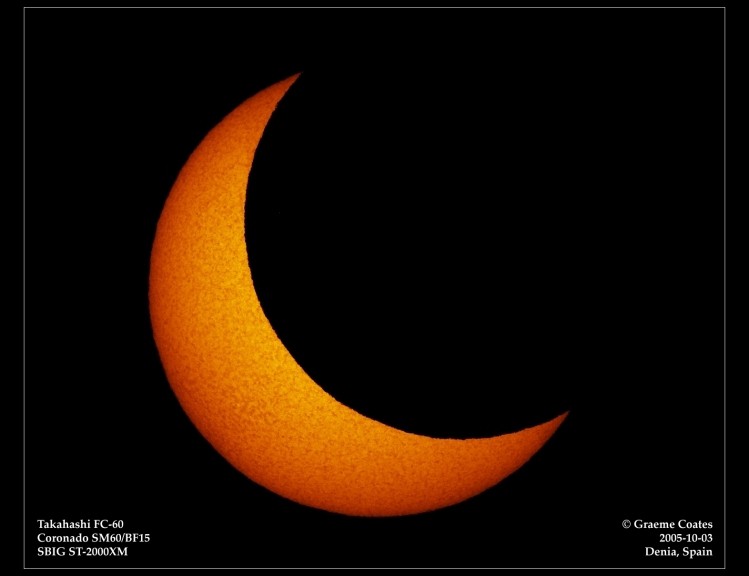On 20th March there is a deep partial solar eclipse over the UK which is total over the Faroe Islands and Svalbard. I set about trying to determine the time of maximum eclipse, and percentage eclipsed at a given location.
I used the pyephem module which is a Python implementation of the numerical routines that are behind the excellent Xephem. The module will allow a user to calculate the positions of astronomical objects (eg Sun, Moon, etc) from a given location at a given time. Using the positions of these objects it’s possible to determine the separation of the centres of these objects.
To work out the percentage eclipse at that time, I used the formula on the Wolfram Mathworld page on “Lunes” (author: Weisstein, Eric W). A “Lune” is the “plane figure bounded by two circular arcs of unequal radii, i.e., a crescent.” which exactly describes the visible surface of the sun during an eclipse.
With the area of the lune calculated, it’s trivial to work out the percent eclipse at that time – and by looping over time, it’s possible to get a list of lists to search for a maximum.
The code can be downloaded using this link: eclipse_percent.py
The result I get (using the location of the Science Oxford setup on 20th March – the SBS in Oxford, UK) is as follows:
Max Eclipse occurs at: 2015-03-20 09:30:11 GMT
Max percentage eclipse: 85.86
First contact: 08:24:21 GMT
Last contact: 10:40:04 GMT
All we need now is some decent weather…
The featured image here is an H-Alpha filtered frame taken by me on 3rd Oct 2005 from Denia, Spain, during the early phases of an annular eclipse.
![]() Eclipse Calculations using Python by Graeme Coates is licensed under a Creative Commons Attribution-NonCommercial-ShareAlike 4.0 International License.
Eclipse Calculations using Python by Graeme Coates is licensed under a Creative Commons Attribution-NonCommercial-ShareAlike 4.0 International License.

Thanks! I am using a variation of this to derive eclipse parameters on different (long,lat). Found that ‘Lunes’ crashes near 100% (negative argument on Delta’s sqrt as s is smaller than radius difference). Easy to avoid though 🙂
Yes – it will do in those cases! And yes – an easy fix to implement 😉